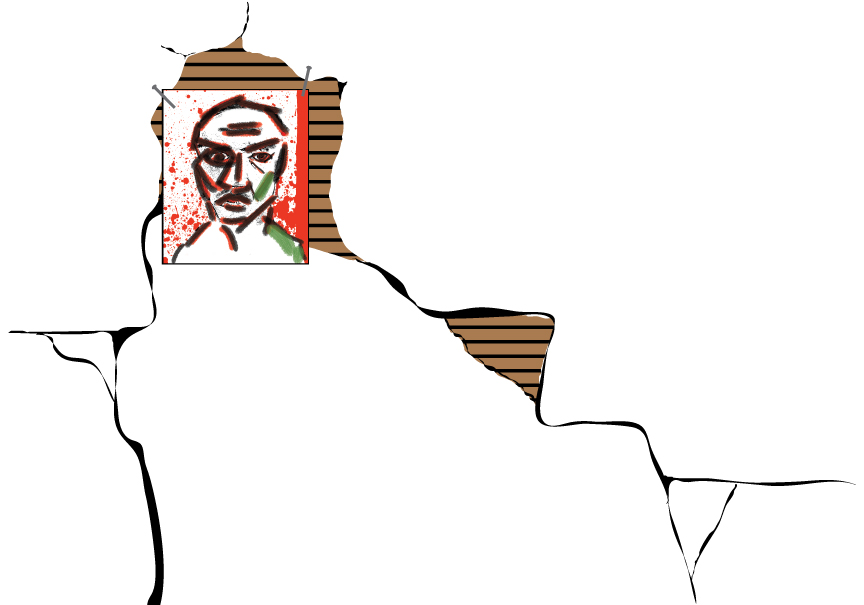The Art of Nothing
The call I got, in effect, went something like this: “We want to do something different–we need to depict a cracked wall, but I don’t want a wall, I want only the crack. I think it needs to be metal, so I thought of you.”
Wire was suggested, but I was unconvinced. “Let me think about it for a couple of days,” I said.
Cracks are jagged, unpredictable. They vary in width, and they can be difficult to convey without the object bearing the crack. The solution needed to be both visible and comprehensible from up to 40 feet away. It needed to be airy, yet rigid enough not to collapse when touched. I wasn’t sure I could pull it off. There were both time and budget constraints, after all.
Finally inspiration came in the form of my house. Several decades ago, I bought an old house with plaster walls, some of which came with a legacy of water damage. I chipped out loose, bowing plaster in places so it could be repaired, and behind that plaster was wooden lath. I found it so charming, that I lived for many years with those broken walls before getting around to the repairs.
I went online and studied dozens of images of cracked walls with exposed lath, and from those I made a small sketch, revising it several times and then using a grid system to enlarge it to full size. The enlarged drawing comprised six panels in all, each 3 x 4 feet. I laid each drawing on my modest shop table in my small garage and methodically bent the steel into the jagged profiles indicated. Sometimes as I bent, the steel curled wildly out of plane, requiring me to twist it with wrenches to bring it back into line. When all the sections were completed, I assembled the template sheets on the garage apron, because there wasn’t enough room inside. I put the assembled metal sections on top, trimmed them where necessary, and welded together what I could. To keep the sculpture small enough to transport to the site easily, the final assembly took place here. And so it stands before you, in earnest service to a play much greater than it is. In service to a story and to the actors telling that story. It is my first such commission, and I couldn’t be more honored.
Lisa Lippincott, artist and metal fabricator
Do you love The Cracks? So do we. But we’d love to see the art go to a good home after the show. If you’re interested, please contact jsorensen@tamparep.org

Lisa Lippincott, artist & metal fabricator

Artist’s Original Concept

Prior to installation
